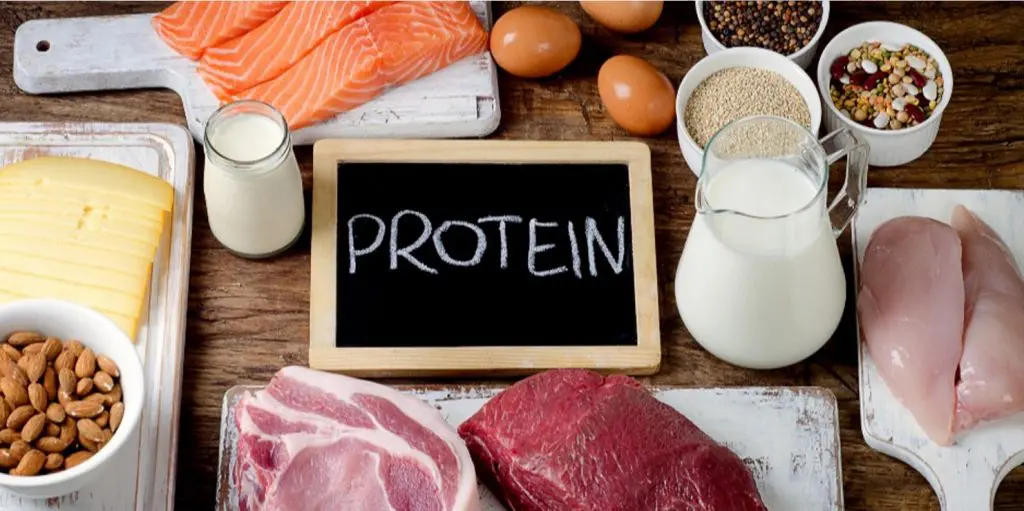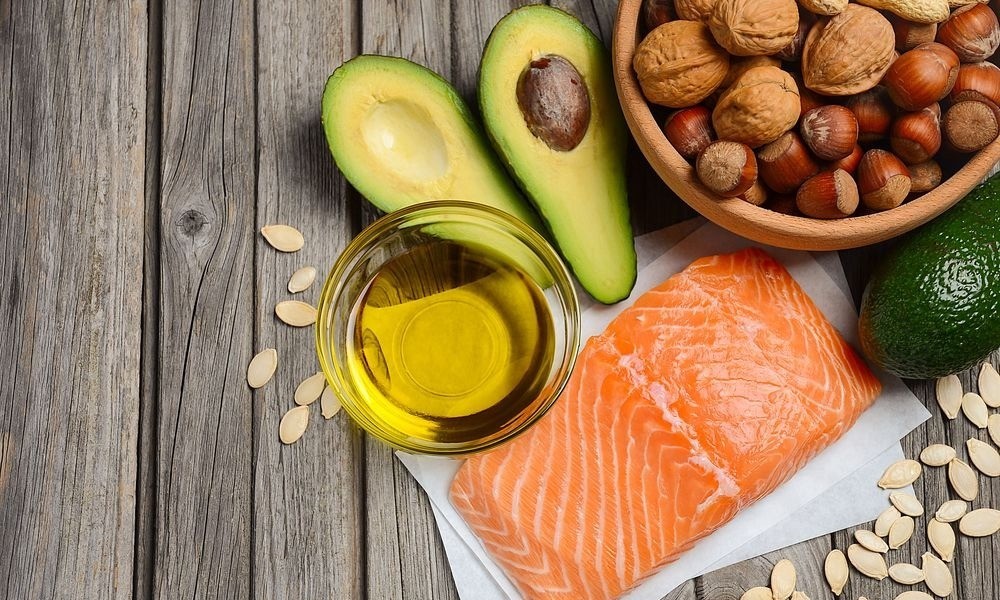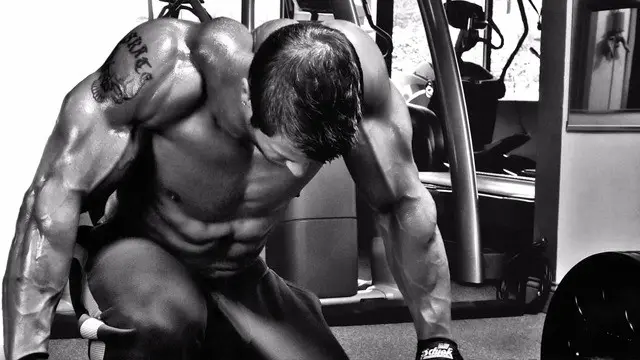Let’s face it… being skinny fat sucks!
It’s bad enough that both extremes are unaesthetic so just imagine combining the two in one body (ok, it’s not all that bad).
Well, many do walk around looking skinny, smooth and there’s nothing about their physique that would indicate that they even lift (and there doesn’t necessarily have to be unless this goes against your efforts and intentions). And although a lot of people couldn’t be bothered to care, we here at FitnessVolt know how much you despise it and are willing to do whatever it takes to fix it.
Let’s talk about skinny fat and how you can reverse it to look lean and muscular…
Note: The following information pertains to both men and women who are skinny fat.
What is Skinny Fat?
Being skinny-fat literally means you’re at least somewhat in the normal body weight range with very little muscle mass and a good amount of fat covering up this little bit of muscle.
Level Up Your Fitness: Join our 💪 strong community in Fitness Volt Newsletter. Get daily inspiration, expert-backed workouts, nutrition tips, the latest in strength sports, and the support you need to reach your goals. Subscribe for free!
You probably know many people like this, in fact.
But if we had to lean toward either side as being more of an issue with this look it’d be the lack of muscle.
So, if one were to have a decent amount under the fat, then this would undoubtedly improve the appearance of an individual who even had a little extra body fat.
For example, if you compare someone who has a decent amount of muscle to another person who has very little muscle (with all else being equal including body fat percentage), then the individual with more muscle is always going to look more impressive because he/she has the better overall body composition.
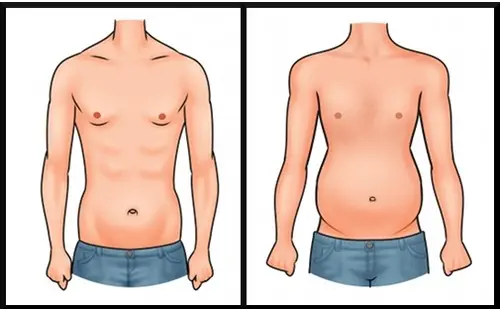
But if you have a very high amount of body fat (like more than 20%), then you’re definitely going to want to burn this fat off while maintaining your muscle so that you don’t add more body fat, making things worse.
Well, the good news is that you just need a little commitment to make big improvements.
Why Are People Skinny Fat?
There are a few different and very obvious reasons that can be the main culprit which include… genetics, doing lots of cardio only/no serious weight training, excessively reducing your calories, and even dealing with chronic stress/health issues.
Genetics
We do get a lot of our looks, body shape, and even body composition from our parents. Although, the last one can be changed hence the reason why we’re going to talk about how you can correct this.
Excessive cardio
Doing lots of cardio will definitely keep the weight off and it’ll strip muscle while also halting progress after a certain point. And if you’re not weight training to gain or even maintain muscle mass, then fat will take its place, in the case of most healthy adults.
Mental stress
Then you have the evil symptoms of chronic stress which can increase cortisol (stress hormone) beyond healthy levels, therefore interfering with your body’s ability to build muscle while increasing body fat. But too much stress is just bad in general.
It can cause diseases of all sorts in the body and will wreak havoc on your health in general.
Excessive calorie restriction
Now, as far as excessive caloric restriction in an effort to keep losing weight goes, well… it’s just a bad idea.
By dramatically reducing the amount of calories that your body needs to run efficiently, you’ll mess with the normal function of your metabolism, making fat gain accumulation a natural side effect, not to mention you won’t be feeding your body enough protein to maintain and build muscle.
Plus, you’ll be depriving your body of essential nutrients which is one of the most detrimental things you can do for your health.

And, your body will do what is needed to preserve energy, therefore, trying to lose all that weight by simply dropping most of your calories will work against you.
Most people think that when they hit a weight loss plateau, that the obvious solution would be to eat even fewer calories…
But ok, by this logic, where do you go when you’ve lowered your caloric intake so much to where you’re barely eating anything and you still haven’t reached your goals?…
The big takeaway… never think that eating like a bird is going to do anything beneficial for your body.
After all, calories are a unit of energy required for all bodily processes… try driving your car with no gas (it ain’t going nowhere).
How Can You Stop Being Skinny Fat?
Since we know that skinny fat is a lack of muscle with a layer of fat over the top, the answer to this is quite simple and we’re going to explain exactly what is needed.
Focus More on Weight Training
There’s no way around this one. You need to be hitting the weights or doing any form of resistance training a minimum of 3-4 days per week for at least 40-60 minutes at a time.
But you also need to be utilizing compound, multi-joint exercises to train all muscle groups efficiently. Compound movements are superior for increasing overall strength and oxygen consumption (which burns more calories) while improving general fitness. (1)
Examples of very effective compound exercises include the deadlift, squat (front or back), bench press, bent-over row, etc.
Also, for better performance and functionality we recommend focusing largely on closed-chain exercises which allow the body to move as one, in a more functional fashion and while the distal end of the extremity being worked is fixed to a solid surface. The squat, pushup, and pullup are great examples of closed-chain exercises since there are no body parts moving freely.
This allows for more muscle recruitment, better joint stability, and better neuromuscular coordination. (2)
And as a result, you’re promoting muscle growth, increasing strength, improving all aspects of physical activity, and burning more calories; which is very efficient.
But you do want to include some open-chain exercises as well since you can still work multiple muscles at once and sometimes it’s the only option.
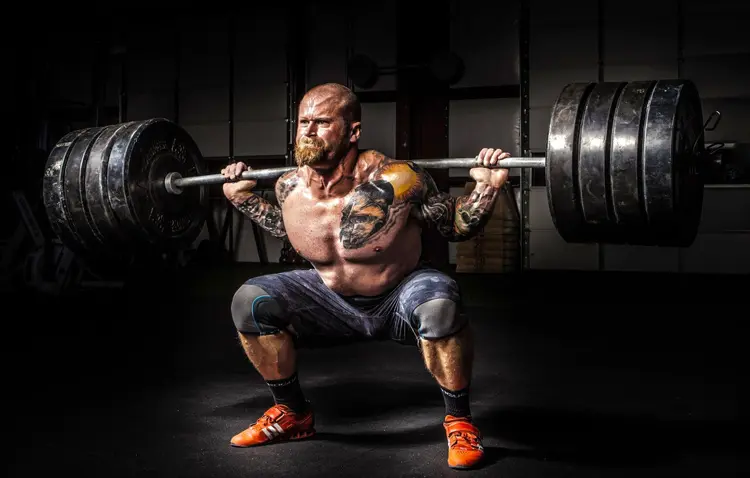
For instance, the bench press is considered an open-chain exercises since the distal end of where the movement originates is not fixed to a surface.
But it’s the creme of the crop for maximally stimulating the chest, and we haven’t found anything better. So, closed-chain exercises are needed and other great examples are the barbell curl, tricep extension, and dumbbell lateral raise (what would we do without these extremely beneficial movements)?
Open-chain exercises are also great for isolating a muscle for growth, strength, and developing a better mind/muscle connection, while also bringing up a weakness, and for better function of a joint (e.g. rehab purposes).
Now, we can’t ignore the fact that progressive overload needs to be a weekly thing if you plan to keep building muscle. This means that you either must increase the poundages or increase the repetitions.
And we’ll let you in on a little secret if you didn’t know this before… but you need to do both.
In fact, one recent study of 18 well-trained men found that both heavy/low-rep and lighter/high-rep training elicit very similar gains in muscle hypertrophy, while, of course, the heavy loads with low reps are better for strength. (3)
This study had participants train 3 times per week for 8 weeks with all variables being equal among them. And so, here we can see that an adequate stimulus for muscle growth can be achieved with muscular overload from both light/moderate and heavy resistance loads.
But even though there are many studies out there, you need to be able to listen to your body and know when to utilize either form of training.
Always going heavy is not recommended for your joints, physical structure, and nervous system. So, don’t go all with maximum poundages every session. But include enough heavy training (at least once every week or two) to make consistent strength gains which is also important for growth.
For lighter load/higher rep days, try to keep the range around 20-25 and take your sets to failure for effective growth and strength improvements. And avoid doing more than 3-4 exercises per muscle group to ensure you’re not overtaxing your system while also making sure you’re training with a high enough intensity.
For moderate resistance training days, reps should be around 10-12.
And then for heavy days, 5-10 reps should be sufficient.
Keep your sets to about 3-4 per exercise and focus on contracting the target muscle/s rather than just moving weight.
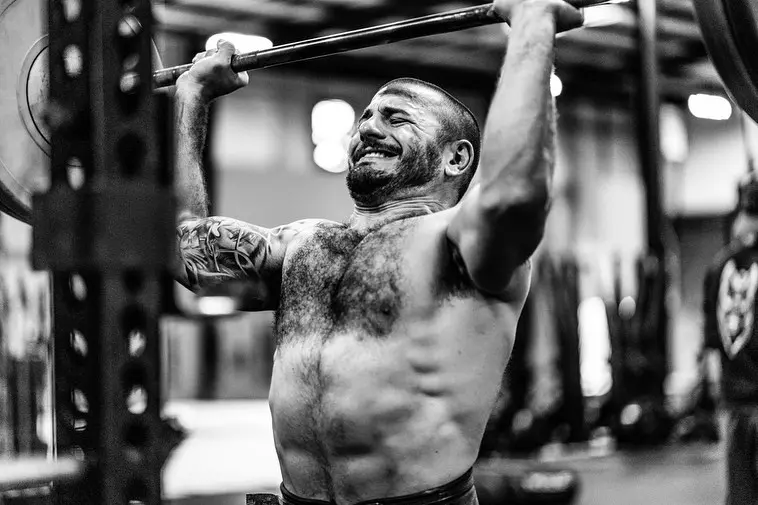
If you’re a natural lifter, train more frequently and keep the volume down to make sure you’re re-stimulating each muscle to signal a growth response more often.
For example, rather than doing five exercises for chest once a week, spread your chest training sessions out over a minimum of two workouts, with three or more being the upper limit. Same with all other muscle groups.
Level Up Your Fitness: Join our 💪 strong community in Fitness Volt Newsletter. Get daily inspiration, expert-backed workouts, nutrition tips, the latest in strength sports, and the support you need to reach your goals. Subscribe for free!
And what this allows you to do is train with a little more volume (e.g. sets/reps) per workout than if you were to train a muscle once per week. But why is this a good thing? Doesn’t overtraining exist?
It does. But… multiple studies have found there to be a dose-response relationship between volume and progression, more specifically where hypertrophy is concerned. However, there is a point at which you can go too far and this isn’t established yet, but a high dose of volume is better suited for the more advanced lifters. (4)
If just starting out, less is more since intensity needs to be the primary focus. So, if a beginner to training, do 5 sets per muscle group a couple times per week rather than doing 20 sets per muscle group every week.
And again, it helps to know your body and recognize the symptoms of overtraining.
Cut Down on Cardio-Only Sessions
Pure cardio is great for a lot of people looking to burn fat and improve endurance, and it even burns more calories than your typical weight training session.
In fact, a session of cardio can burn 100 or more calories than a weight training session of equal effort.
But, weight training has its benefits to balance this out. Muscle burns additional calories by increasing your resting metabolism (calories burned at rest) although not dramatically.
Also, weight training has been shown to burn more calories for hours following a session than cardio does due to the excess post-exercise oxygen consumption (EPOC), especially when doing high-intensity interval training or HIIT, which involves short bursts of activity alternated with equally long recovery periods.
Well, fast-paced weight training (HIIT) at a very high level of effort can be extremely effective for building muscle and burning calories.
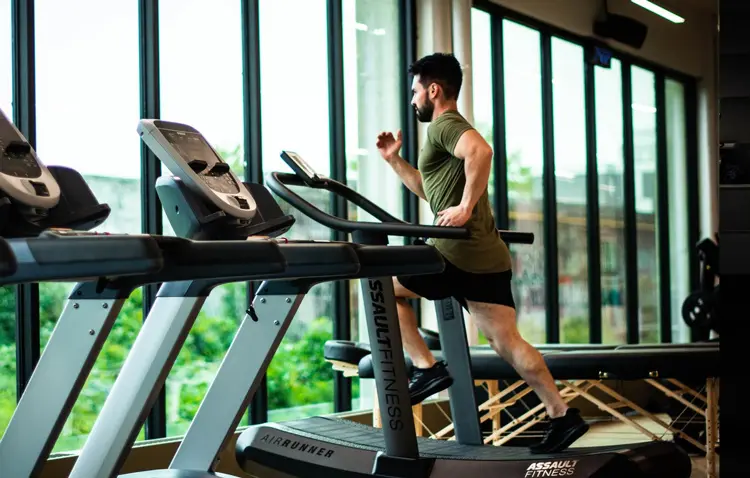
One study had several overweight and obese individuals do HIIT and moderate-intensity cardio to see which was more effective for making improvements in body composition. (5)
Well, it turns out that both resulted in similar improvements and it was concluded that HIIT is an effective, time-efficient method for weight loss.
- To effectively construct a HIIT routine, choose a few different exercises which target different muscles of the body (e.g. squats, pushups, pullups, etc) and cycle (do all exercises in successive fashion) through them once before following this up with an active recovery period (choose a light activity like high marches to keep your heart rate up) between sets for the same amount of time it took you to complete all the exercises; in a fast-paced manner.
10 minutes of HIIT is plenty and 20 min a day of regular cardio is sufficient for most people.
But choose either cardio or HIIT each day and don’t do both.
Now, another huge benefit of weight training as a skinny fat person is because having too little muscle mass means you can experience a recomposition.
What’s this? Well, it basically means you’ll be able to put on muscle and lose fat at the same time. And if you’re an adult with very little muscle right now, then this can indicate a few different things…
- You have never engaged in a serious weight training regime.
- You had more muscle before but you stopped training and lost it.
- You do too much cardio.
- You eat like a bird.
So, to remedy this, you have to implement a rather challenging resistance training program and fix your diet which leads us to the next thing…
Nutrition For Skinny Fat People
We’ve already established that the last thing you want to do when skinny fat is to dramatically reduce your calories because you’re not extremely overweight… you’re ‘skinny’ fat.
But when reversing this skinny fat syndrome, you don’t want to increase your calories so much at first to where you’re putting on additional fat.
So, you want to make sure to increase your calories little by little each week while making noticeable improvements and then you can gauge what may need to be adjusted from there.
It’s also a good idea to keep track of your total daily energy expenditure (TDEE) so that you’re not habitually falling back into excessive caloric restriction.
Then you’ll have a good base to work from.
And when you finally get to the point where your body is not recomping as much as it did before, then you’ll have to change up your strategy a little bit.
So, you’ll have to determine your maintenance calories (how many calories your body needs to maintain your current body weight), then adjust from there.
Here’s our calorie calculator to make adjusting your numbers more effective for reaching your goals.
Now as far as the actual foods, sufficient protein intake from meat, dairy, and.or plant-based sources is a must for building and preserving muscle mass regardless of your goal/s.
Protein is the macronutrient that contains muscle-building amino acids and consuming plenty throughout the day is the only way to ensure you’re remaining in a positive nitrogen balance; which is crucial for hypertrophy.
Check out our protein calculator to see how much you need based on your goals.
You can even be in a caloric deficit and build muscle with enough protein but it’ll take a bit longer to do. However, you’ll burn fat and look a lot more aesthetic, even if not building muscle, since you’ll be focusing more on preservation.
Then for carbs and fats, well, you need both but it depends on your activity levels. For instance, high-intensity training will require more carbs to ensure it’s being used as the main energy source and not muscle (unless you do keto of which fat will be used primarily to fuel your activities).
Eat more complex carb sources (e.g. sweet potatoes, oatmeal, rice, etc) to sustain your activities for a prolonged duration and limit the simple sugars (fast-digesting) which are best consumed right after intense activity to replenish your glycogen stores quickly for energy-burning and to spare muscle tissue.
But you don’t want to consume too many carbs as this will just cause an excess of storage leading to fat gain.
Fats are also an important source of energy not to mention it’s vital for optimal health function, so you want to consume plenty of the healthy kind (e.g. avocados, nuts, healthy oils, etc).
Oh, and don’t forget to include your veggies (mostly leafy greens) to get plenty of the important micronutrients (vitamins and minerals) for good health!
To have a better idea of your recommended macronutrient ratios, here’s our macro calculator which will make keeping track so much easier.
Manage Stress Factors
If you remember, we mentioned how excessive stress is a destroyer and it’s often the result of lifestyle factors which include financial struggles, relationship issues, and just being in a difficult situation overall.
But certain medications and medical treatments can play a role as well.
Too much stress will make gaining muscle a nightmare and the undesirable fat gain is inevitable.
So, stress management is crucial for attaining your ideal physique. When cortisol and adrenaline (stress hormones) are constantly elevated, your normal bodily processes get thrown out of whack and disease eventually ensues. (6)
So, even if it weren’t for you wanting to get rid of the skinny fat physique, you cannot afford to live in constant stress for the sake of your overall health.
According to the American Institute of Stress, too much-prolonged stress increases your chances of developing many health issues which include…
- Heartburn
- Insomnia
- Weak immune system
- High blood sugar
- Risk of heart attack
- Depression
- Fertility issues
The list can go on…
Here are 4 tips to lower your stress levels.
Wrapping Up
You don’t have to be a skinny fat person regardless of what you may have previously thought. All it takes is making a few lifestyle adjustments and you can lean out while actually looking like you train.
But, it’ll definitely take some time and commitment to transform your physique (there’s no way around it).
We hope learned plenty from this information and now… it’s time for you to go from skinny fat to lean and jacked.

